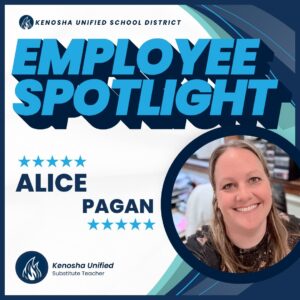

Latest News

Bubble Bonanza family education program (July 22)
"Pop" on in for an afternoon of bubble exploration! Discover the science behind bubbles, try your hand at some bubble ...

Building Trade Careers Summer Camp (Aug. 4-7)
We invite KUSD students entering grades 7-9 to join us for our FREE Building Trades Summer Camp, which includes four ...

Employee Spotlight: Alice Pagan
Meet Alice Pagan, an invaluable substitute teacher whose commitment to supporting our students and staff is truly exceptional. She’s always ...

NEW for 2025 – Universal Registration
We now offer Universal Registration! This process allows you to register and submit paperwork at any school, no matter which ...





